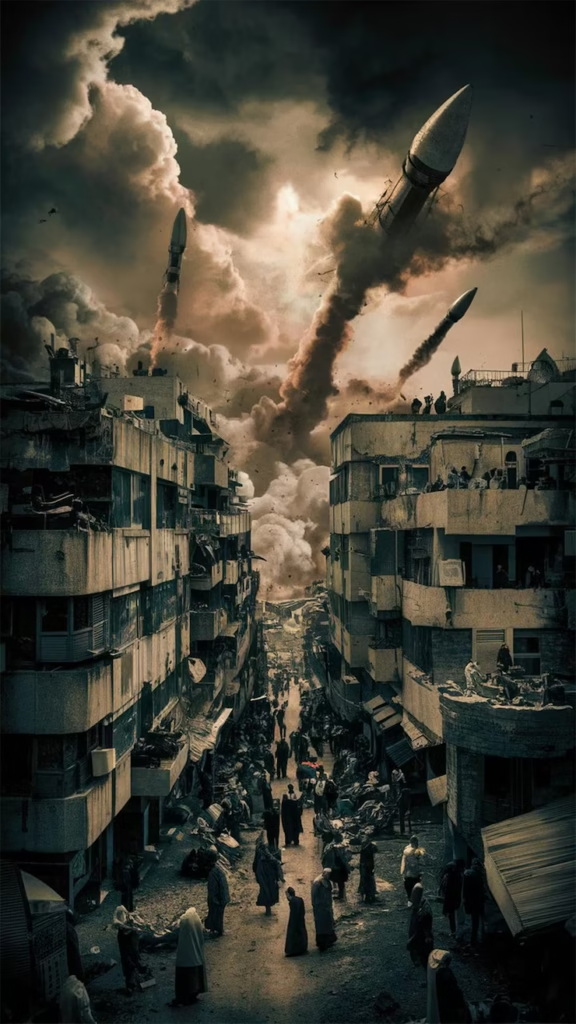The humanitarian crisis in Gaza has grown worse in recent weeks. Civilians face a lack of food, water, medicine and safe shelter. Aid groups warn that tens of thousands more people may die if help does not reach them soon. This article explains the main recent changes in five key areas: aid access, food shortages, health risks, living conditions and global reactions.
Blockade and aid access
Israel lifted an 11-week cutoff of aid on May 21, 2025, but trucks still cannot reach most of Gaza’s 2 million people. The army says it set up special corridors for aid. But drivers fear for their lives when they try to go past front lines. Aid agencies report that less than 10 percent of needed food, water and medicine has entered since the lift began.
The army also created a “sterile zone” in southern Gaza. They say this will keep the armed group Hamas away from aid convoys. Private firms from the United States will help direct trucks. Israel claims this plan will stop aid theft. But the United Nations and charities call it unsafe and say it bypasses trusted relief groups. And that means most supplies still sit at border crossings.
Aid workers face more danger than before. On May 20, Israeli troops fired warning shots near a World Health Organization convoy in the north. No one was hurt. But organizations now refuse to send staff without better security. And many aid groups have pulled out foreign staff for safety. This pause makes it harder for local clinics to treat the wounded and sick.
Food shortages and famine risk

People in Gaza have little food at all. Prices in local markets have jumped by 1,400 percent since March 2, when the full blockade began. Bakeries ran out of flour and oil by the end of April. United Nations kitchens that once cooked hot meals stopped in late April when their last stocks ran out.
As of mid-May, more than 65,000 children under five are severely malnourished. Doctors Without Borders says at least 14,000 babies could die from hunger in 48 hours if nothing changes. Aid groups report families split a single piece of bread among six people. People say they go to sleep feeling weak and dizzy.
If aid stays stuck at borders, famine will spread fast. The World Food Programme warns there may be no bread at all before the month’s end. People cannot dig wells for water or grow food in fields near front lines. And fuel shortages mean families cannot cook what they do get.
Health and disease outbreaks
Hospitals in Gaza are on the brink. Over half of them are closed or only partly open since October 2024. Fuel is too scarce to run generators. That leaves operating rooms dark and cold stores off. Medical teams say they have no clean water or power to sterilize tools.
Diseases spread fast in crowded shelters. The World Health Organization reports sharp rises in diarrhea, scabies, jaundice and lung infections since winter. Over 360,000 cases of infectious illness hit shelters by December 2024. More outbreaks came when rains flooded tent camps, mixing sewage with drinking water.
Since March, 57 children have died from severe lack of nutrition. That number may be too low. The Gaza health ministry says many cases go unreported in front-line areas. If conditions do not improve, up to 71,000 children could suffer life-threatening hunger by April 2026.
Displacement and shelter conditions
Most people in the south have fled their homes. The United Nations says around 75 percent of Gaza’s population is now displaced in makeshift camps. Families live in tents on muddy fields or crowded school gyms. Heavy rains and floods have soaked bedding. Children and older adults shiver all night.
Where tents collapse, people crowd into warehouses. But these were not built for families. They have no toilets or kitchens. And water tanks were broken in fighting. The UN under-secretary general said the camps are “deplorable” and “worsen by the day”.
People say they sleep three to a mattress. And wild dogs roam at night, biting those who try to keep watch. Many families report mental strain. They cannot plan any future. Parents say they worry how they will feed their children in the coming months.
International responses
Global anger rose after reports of Israeli troops firing at a group of diplomats in Jenin. Several countries summoned the Israeli ambassador to complain. The UK paused trade talks and gave £4 million more in Gaza aid. France and Spain, among others in the EU, want to suspend their partnership deal with Israel over its actions in Gaza.
Some world leaders pushed for an immediate ceasefire. They say ending the fighting now would let aid and repairs start. But Israel says it will only stop when it has full security control of Gaza. Prime Minister Benjamin Netanyahu added that Hamas must lay down arms first. He also said Israel will keep guard over the territory even after the war ends.
Relief groups call for a new action plan. They want safe corridors, local partners in charge of aid and daily convoys. They say this will speed up help and save lives. They also demand full respect for international law and no harm to civilians.
What comes next?
The crisis stands at a turning point. Aid groups warn the coming days will decide if Gaza slips into full famine. Food and medicine are close to gone. And hospitals cannot treat more sick and wounded.
If more trucks do not move, many will die from hunger or disease. Governments must push harder for a ceasefire and safe aid routes. And Israel needs to let trusted relief agencies work without fear.
But people in Gaza say they just want to live. They pray for peace. And they hope the world will not let them face this alone.

